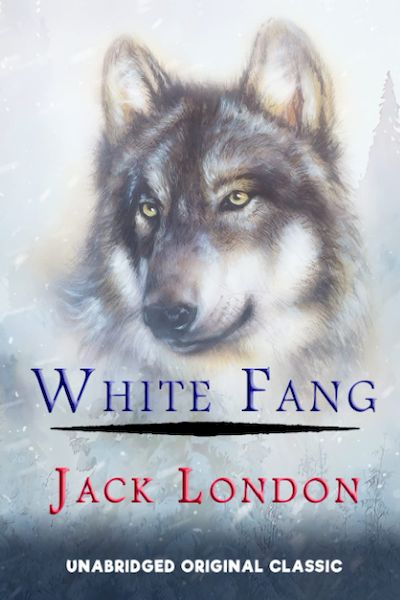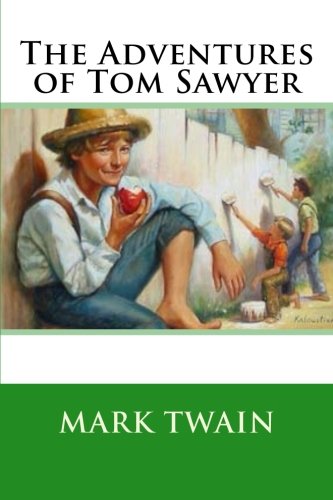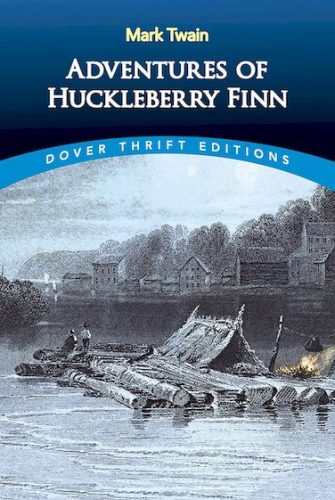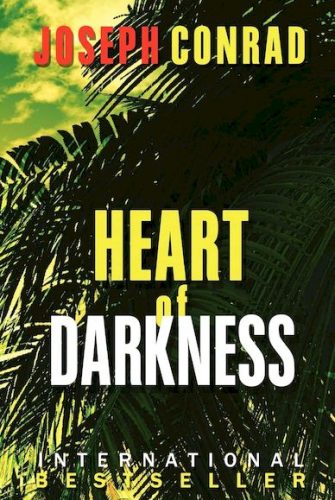White Fang is, in many ways, the counterpart to Jack London’s earlier novel, The Call of the Wild. Whereas in that novel, a domestic dog in the Alaskan wilderness becomes a ferocious wolf, a half-wolf gradually develops into a well-adjusted “best friend” of his master. Jack London was one of the first to describe in fiction the importance of the environment in developing a personality, even that of an animal. Despite its psychological subtleties, White Fang is primarily a classic adventure novel, not least because of the impressive descriptions of nature in the Canadian wilderness around the Yukon. Here, the law of the jungle prevails, and London describes the brutal cycle of eating and being eaten, often without comment.

Take-Aways
- Along with The Call of the Wild and The Sea-Wolf, White Fang is one of the most successful novels by American adventure writer Jack London.
- Jack London narrates the story from Weedon’s perspective, offering the reader a glimpse into his thoughts.
- The novel draws upon London’s experiences as a prospector in the Klondike.
- Like many of London’s works, White Fang is notable for its detailed descriptions of nature.
- Charles Darwin’s theory of evolution and its principle of the survival of the fittest significantly influenced the novel’s structure.
- White Fang’s transformation into a domesticated animal is made possible through the affection and love of his master.
- White Fang achieved significant commercial success and has been adapted into several films.
White Fang Book Summary
Hunted by Wolves
Northwest Canada’s Yukon Territory at the end of the 19th century: two adventurers cross the lonely and frosty snowy desert by dog sled. Bill and Henry use their six dogs to transport equipment, food and a coffin. It contains the body of an English lord who died during a trip to Canada and must now be brought home. To do so, the coffin must first be transported to the village of McGurry, which is several days’ sleigh ride away. A pack of hungry wolves follows the men, approaching the campfire each night. As Henry feeds the dogs, a seventh mouth suddenly snaps shut and disappears into the darkness. Only five dogs are left at the campsite the following day — and the loss continues. One by one, a female wolf lures the males into the trap of the pack lurking in the distance. She shows no shyness toward the men. She is used to being around people. A few days later, Bill rushes to the aid of his favorite dog and runs to his doom. Only Henry survives the perilous transport. He is rescued just in time, as other men have gone in search of the deceased master and happen to be nearby.
The Rules of the Wild
The she-wolf wants to mate and pits the three males she finds most interesting against each other. The winner, a one-eyed and experienced wolf, becomes her mate after the pack is dispersed. The female wolf retreats to a cave to give birth to her pups. Although the male wolf provides the best possible care for his family, only the strongest of the five pups survive. When the father dies in a fight with a lynx and the mother must go in search of food, the curious young wolf sets out to discover the world outside the cave. Animals, trees and grass, rocks and rivers: Everything awaits exploration. By chance, the young wolf discovers a ptarmigan’s nest and finds his first prey as chicks. But he also encounters the angry mother. A hawk snatches the prey from him before he can eat it.
As the gray cub continues its foray through the wilderness, it tumbles down a slope and falls into a river. Rapids catch the little one, who, after some initial difficulty, instinctively begins to swim. Far from his cave, he is washed ashore. There, he meets a weasel, smaller than the wolf but experienced and aggressive. It bites the wolf’s neck. At the last moment, the wolf appears. She kills the weasel and eats it with her son before they both return to the shelter. In a very short time, the young wolf has learned the rules of the wilderness. What was once a game is now deadly serious: eat or be eaten.
With the Indians
One day, the wolf and her cub meet a group of Indians. The people recognize the mother animal that once belonged to their tribe: it was born from the union of a wolf and a bitch. During a famine, the half-wolf fled into the wilderness and joined a pack of wolves. After several years, she returns to the Indians, her pup in her wake. Because of his striking teeth, the young wolf is named White Tooth by his new master, the Indian Gray Beaver. Little by little, White Fang becomes more familiar with his new surroundings and the rules of the humans, who seem like all-powerful gods. From the beginning, his only enemies are the common dogs. One dog in particular, the undisputed leader of the dogs in the Indian camp, makes life difficult for White-tooth.
When White Fang and his mother are separated, the young wolf, who is only a quarter dog, has to learn the hard way how to defend himself against the dogs. This makes him unpopular with many of the Indians. Most of them insult the wolfdog and chase him away when he comes near them. The only exception is Gray Beaver, who treats White Fang a little more fairly but still leads him with a firm hand. Hated by humans and animals alike, White Fang’s gentle side is withering. He especially hates being laughed at when he burns his nose on his first encounter with fire.
Outsider
White-tooth’s desire for freedom is so strong that he flees into the nearby woods one day. But the Wolfhound has become too accustomed to being around humans, despite all the evil, and voluntarily returns to the Indians. The welcome is not warm, but the return is rewarded with extra food. White Fang is now also used as a sled dog, further complicating his relationship with the other draught animals. On the other hand, he feels a particular bond and loyalty to Grey Beaver and his family. White Fang runs with the sled team of Mitsah, Grey Beaver’s son. When other children attack Mitsah, the Wolfhound stands by him and defends him. In return, he receives praise and extra food. Slowly but surely, White Fang finds his place in the community.
When he was three, the Indians were hit by a great famine. Some dogs are slaughtered. The more intelligent animals, including White Fang, flee into the woods. There, he preys on the weaker members of his species to survive. He also unexpectedly encounters his nemesis, the male from the Indian camp, who has also fled into the forest. White-tooth — now a more than equal opponent — kills him. When the food shortage ends, the Wolfhound voluntarily returns to the Indians. He is now stronger than most dogs and regularly proves it to them. He regains the respect he lost as a subordinate sled dog in the wild night fights. Unlike the dogs, White Fang does not warn his numerically superior opponents but attacks them directly and makes short work of them. Because of the many dogs that fall victim to him, he soon gains a legendary reputation among the Indians, but this does not make him any more popular.
A New Master
White Tooth accompanies his master, Gray Beaver, on a long journey to Fort Yukon. The place is overcrowded with gold seekers, who leave from here for Dawson and the Klondike. The Indian makes a roaring trade in skins and furs, while White Fang hunts the newcomers’ dogs for fun. The Wolfhound is cunning enough only to hunt and catch the new dogs, leaving their killing to the dogs of Fort Yukon, who want to defend their territory. However, they also suffer the punishment of the dog owners. In this way, White Fang can harm all the hated dogs. His clever actions are noticed and attract the interest of the shady cook and assistant, Beauty Smith. He wants White Fang because he takes sadistic pleasure in his bloody feuds. At first, Gray Beaver refuses to sell his unique Wolfhound, but then Smith introduces the Indian to alcohol. All the money is spent in no time, and Gray Beaver trades White Fang for a few bottles of firewater. The animal takes several blows from both sides before accepting his fate.
In the Arena
White Fang is now trained and made aggressive with clubs, taunts, and insults to compete in dog fights organized by Beauty Smith. White Fang enjoys the fights because he can let off steam and always comes out on top. He maintains the upper hand even in fights with several opponents at once or with wolves and lynxes. The winning streak continues, and soon there seems to be no suitable opponent for White Fang, known as the “Fighting Wolf”. The tables turn when White Fang is pitted against a pit bull. At the end of a brutal fight, the pit bull bites the wolfdog’s neck, leaving him in a life-threatening situation. A man by the name of Weedon Scott happens to be passing by the arena. Disgusted by what is happening, he insults the spectators and violently ends the show: after knocking down Beauty Smith, he buys White Fang from the animal abuser under threat of further violence.
The Beloved Master
Weedon Scott’s first attempts to get close to the wolfdog end with bloody hands and legs, but Scott and his sled dog driver, Matt, aren’t about to give up. The most critical steps to success are freeing White Fang from the chain, no more beatings, and regular feeding. With great sensitivity and patience, Scott gains White Fang’s trust and begins to enjoy being touched and petted. In return, he proves to be a reliable watchdog and sled leader. However, the Wolfhound finds it difficult to express his new feelings. He does not bark, wag his tail, or play. He has never learned any of that. He responds more subtly with dependability, growls, and sheer presence. White-tooth has trouble tolerating when his new master is away on business. During that time, the Wolfhound refuses to eat and becomes ill. When his master returns, his condition constantly improves quickly.
When Weedon Scott decides to return to his home in California, he first wants to leave White Fang in the care of his friend Matt. But the Wolfhound jumps through a closed window and arrives on the Yukon steamer shortly after his master. Scott can’t bring himself to leave White Fang behind and takes him with him. When they come to San Francisco, White Fang is deeply frightened by the big city’s hustle and bustle and noise. He feels more dependent on his master than ever and, at first, growls at anyone approaching him.
The New Home
White Fang’s new home in sunny California is not a city but the Scott family’s large estate. White Fang meets Weedon Scott’s parents, children, siblings, and servants there. Over time, he makes friends with his new surroundings, overcomes some shyness, and learns many new rules. He develops affection for most family members and realizes he must leave other pets alone. By this time, however, many chickens have died in the Wolfhound’s jaws. One of White Fang’s most amazing changes is that he plays, at least with his master, to whom he is unconditionally devoted. He also accompanies him on long rides into the surrounding countryside. When Scott falls while riding and is injured, he orders White Fang to run home and get help, which he does. The animal’s affection only wanes once when the female sheepdog in the house, who is ready to mate and has always been dismissive of White Fang, shows interest in him for the first time and invites the male to go on an outing with her.
A Tough Guy
As a judge, Weedon Scott’s father once sentenced a man named Jim Hall to a lengthy prison term, and Hall swore revenge in the courtroom. When Hall manages to escape prison, he goes to the Scott estate and breaks into the house at night. Before he can wreak havoc, the criminal is confronted by White Tooth. Hall does not survive the brief fight that ensues, but he inflicts severe injuries on the Wolfhound: gunshot wounds, broken bones, and internal bleeding. A grateful Judge Scott provides White Fang with the best medical care, and he survives thanks to the excellent treatment and care he receives and his brutal nature. Once back on his feet, White Fang takes his first unsteady steps at his master’s side into the stables, where six curious puppies greet him. The shepherdess had just given birth to them. Satisfied with himself and the world, White-tooth lies down to doze in the warm sun while the kittens playfully crawl over him.
Structure and Style
Jack London chooses a somewhat unusual introduction for White Fang: the first part introduces characters who play no role in the rest of the story. In the following part, London does not take the perspective of humans but of animals. The opening episode reads like an introductory short story, primarily setting the action’s time and place and establishing the novel’s atmosphere: In the harsh wilderness of the American North, the law is to eat or be eaten. As the story progresses, the action moves further away from this barren region, ending in sunny California. The external action is followed by the development of White Tooth’s personality, from whose perspective London writes. The struggle against his wolfish savagery is, metaphorically speaking, the conflict between nature and civilization. London gets to the point quickly: his sentences are short, and he uses active verbs and brief descriptions of nature and mood. Above all, he wants to entertain, describes more than he explains, and largely avoids moral digressions. When London adopts the wolf’s point of view, he always describes the events in a naturalistic, calm and objective way, without sentimentality and without trying to humanize the animal too much.
Historical Background
The Klondike Gold Rush
White Fang is set against the backdrop of history’s most incredible gold rush. The area around the Yukon and its tributary, the Klondike, was explored by Robert Campbell, a fur trader for the Hudson Bay Company, in the 1940s. The area became part of the Canadian Northwest Territories in 1870. At that time, the area was a desolate wilderness. This changed abruptly with the discovery of gold. On August 16, 1896, American George Carmack and his Indian relatives struck gold at Rabbit Creek. The news immediately attracted several men to prospect around the small town of Forty Mile.
For almost a year, the initiates could collect gold in peace without being disturbed by the outside world. However, when some of the newly minted gold millionaires travelled up the west coast of the U.S. by steamship, the news of the gold discoveries caused a veritable earthquake. More than 100,000 Americans journeyed to the Yukon, and adventurers came from as far away as Australia, Europe, and Asia. At first, the gold was panned by hand; later, mines were built. Not all newcomers sought gold; many wanted to make money in the burgeoning gold-mining towns with their crafts and trades. Outfitters, provisioners, laundries, hotels, saloons, and brothels flourished. Prospecting continues in the Klondike today, albeit with excavators, bulldozers, and pans.
Origin
Charles Darwin was a significant influence on Jack London. His theories were well-known by 1900 and shaped many people’s views of nature and life. Jack London used Darwin’s popularity as early as 1903 in his novel Call of the Wild, which describes the feralization of a dog that survives in the harsh natural environment thanks to its outstanding adaptability. The book’s success quickly aroused the desire in London to write another novel with a similar theme, not a sequel, but set in the context of the first. In February 1906, he told his publisher that he intended White Fang to be the counterpart to Call of the Wild: “I shall reverse the process. Instead of showing how a domesticated dog reverts to a wild animal, I shall show the path of evolution, the civilization of a dog. Naturally, London hoped White Fang would be a hit, building on the success of the earlier book.
He began writing the novel in the summer of 1906. Once again, he used the harsh life in the icy north of the United States and the gold rush in the Klondike as the backdrop for his plot: he had prospected for gold in the Klondike in 1897. London wanted to describe the development of his animal protagonist meticulously and scientifically. Using an encyclopedia, he sketched: “White-tooth is conceived in February, born on April 3, opens its eyes for the first time after 21 days, is suckled until June 5, eats meat from May 3, leaves its mother in December, is fully grown in three years, and lives 15 years.” London made rapid progress on the novel. It was finished in early October 1906, and the book was on the market a month later.
History of Impact
Like its predecessor, Call of the Wild, White Fang was and remains one of Jack London’s most famous novels. London was extraordinarily successful as an author who deliberately chose the general public as his audience and who wanted to make a living from his books. Translations into some 30 languages and millions of copies in print speak for themselves. London was one of the first to address the influence of the environment on the individual and Darwinism and to create an atmospheric setting.
Like any good adventure novel, White Fang has been made into a movie several times. However, not all adaptations stuck to the original plot. For example, the 1991 film with Ethan Hawke and Klaus Maria Brandauer took a very liberal approach to the story but was so successful that a sequel even followed it.



